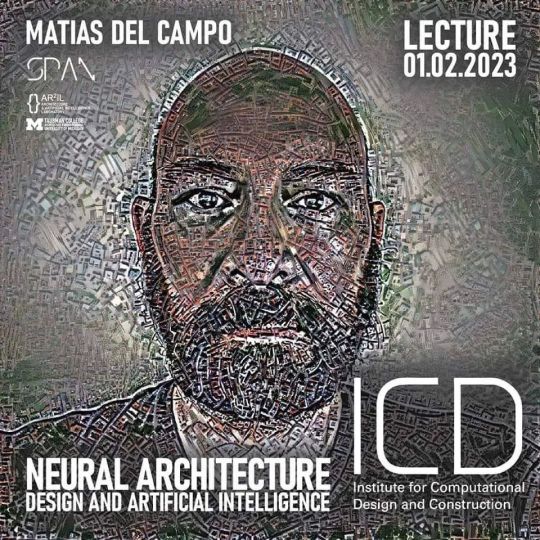#intcdc
Explore tagged Tumblr posts
Text

1 note
·
View note
Link
Researchers at the University of Freiburg and the University of Stuttgart have developed a new process for producing movable, self-adjusting materials systems with standard 3D-printers. These systems can undergo complex shape changes, contracting and expanding under the influence of moisture in a pre-programmed manner. The scientists modeled their development based on the movement mechanisms of the climbing plant known as the air potato (Dioscorea bulbifera). With their new method, the team has produced its first prototype: a forearm brace that adapts to the wearer and which can be further developed for medical applications.
This process has been collaboratively developed by Tiffany Cheng and Prof. Dr. Achim Menges from the Institute of Computational Design and Construction (ICD) and the Integrative Computational Design and Construction for Architecture Cluster of Excellence (IntCDC) at the University of Stuttgart, together with Prof. Dr. Thomas Speck from the Plant Biomechanics Group and the Living, Adaptive and Energy-autonomous Materials Systems Cluster of Excellence (livMatS) at the University of Freiburg. The researchers are presenting their results in the journal Advanced Science.
Read more.
16 notes
·
View notes
Photo

New paper in Processes on “Development of an Impregnation End-Effector with Fiber Tension Monitoring for Robotic Coreless Filament Winding”. The manufacturing process of robotic coreless filament winding has great potential for efficient material usage and automation for long-span lightweight construction applications. The most influential process parameters are related to the resin impregnation of the fibers and the applied fiber tension during winding. The end-effector developed in this study allows efficient resin impregnation, which is controlled online by monitoring the induced fiber tension. The textile equipment was fully integrated into a nine-axis robotic winding setup. The cyber-physical fabrication method was verified with an 11m long proof-of-concept demonstrator.
pic & text by Achim Menges
Professor / Director, ICD Institute for Computational Design and Construction / EXC IntCDC, University of Stuttgart
Congrats to first author Pascal Mindermann, as well as co-authors Serban Bodea and Götz T. Gresser!
Please find the full paper here: https://www.mdpi.com/2227-9717/9/5/806/htm#
14 notes
·
View notes
Photo

I'm very much looking forward to giving a lecture next Wednesday, February 1st, at the ICD in Stuttgart, Germany. Thank you very much to Achim Menges for the generous invitation to speak in front of esteemed colleagues and the brilliant students of the ICD! I'll be speaking about the work at SPAN and the AR2IL laboratory regarding the application of Artificial Intelligence in Architecture design. The book "Neural Architecture - Design and Artificial Intelligence" serves as the backdrop for a series of concepts and effects akin to estrangement and defamiliarization in the resulting designs. A large portion deals with the rise of text-to-image models (Diffusion Models) and how they influence architectural thinking. (Leaning on ideas by Wittgenstein, Barthes, and Foucault as a sloppy frame for conceptual interrogation) 01/02/2022 at 17:30h EST https://www.intcdc.uni-stuttgart.de/news/events/IntCDC-Constructive-ConversationsbrNeural-Architecture---Design-and-Artificial-Intelligence./ #neural_architecture #aiarchitecture #midjourneyart #midjourney #diffusionmodels #newparadigm #machinelearning #diffusion_model #disco_difussion #stablediffusion #aiarchitects #posthuman #postdigital #architecture #architecturedesign #ontology #epistemology #theory #lecture #nmims #taubmancollege #taubman_college #ICD #instituteforcomputationaldesign #IntCDC (at ICD) https://www.instagram.com/p/CoAItmDMjMd/?igshid=NGJjMDIxMWI=
#neural_architecture#aiarchitecture#midjourneyart#midjourney#diffusionmodels#newparadigm#machinelearning#diffusion_model#disco_difussion#stablediffusion#aiarchitects#posthuman#postdigital#architecture#architecturedesign#ontology#epistemology#theory#lecture#nmims#taubmancollege#taubman_college#icd#instituteforcomputationaldesign#intcdc
0 notes